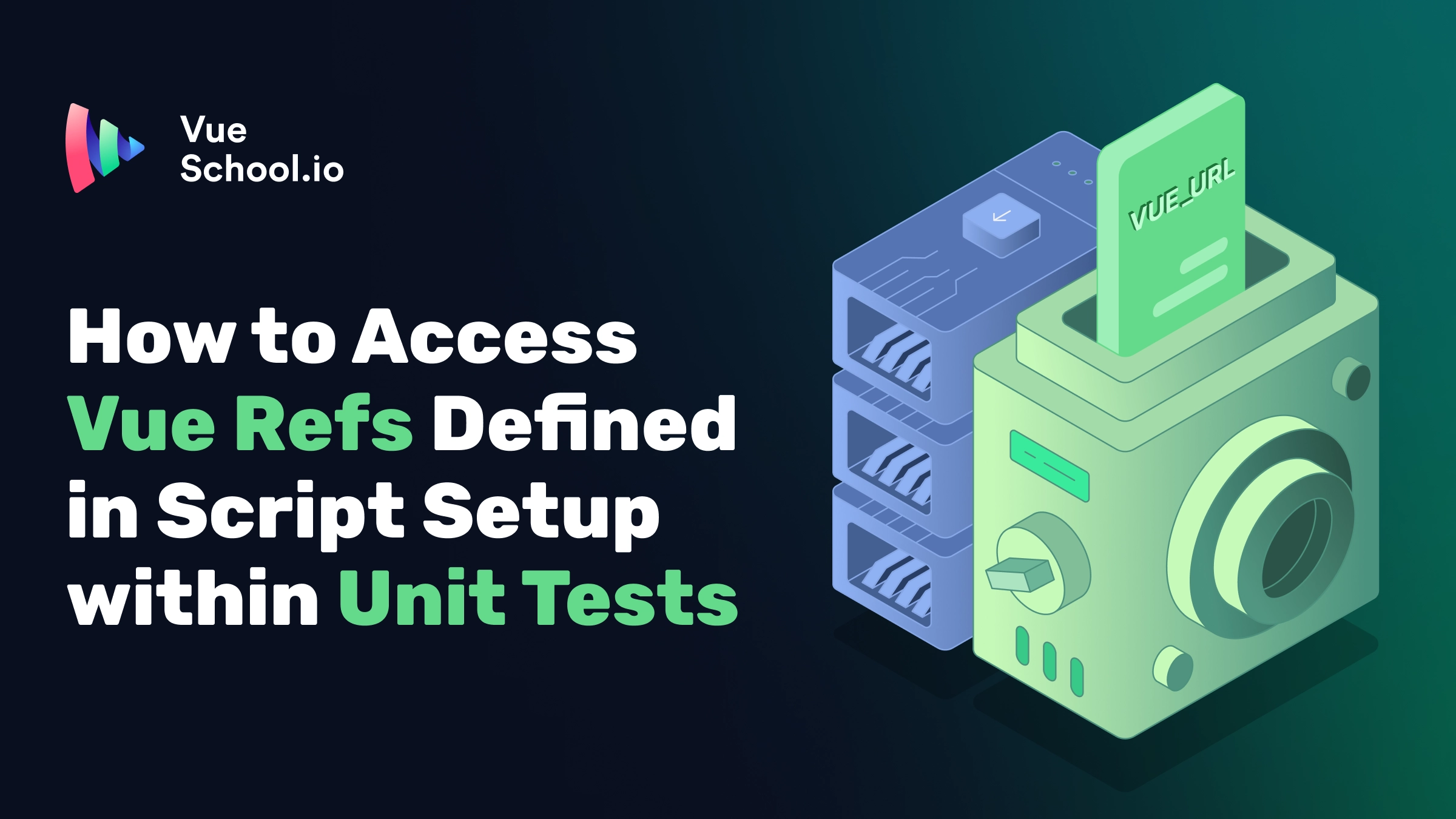How to Access Vue Refs Defined in Script Setup within Unit Tests

You may be familiar with how to read data defined on your Vue components with the options API from within your unit tests. That looks like this:
wrapper.vm.$dataBut most people these days prefer using the composition API along with script setup. Reading reactive data defined with ref and reactive during testing looks a little different. So how do you manage it?
⚠️ NOTE: that most unit tests should NOT need to read the components internal data directly. Instead you should prefer to read the rendered HTML output to ensure it’s displayed as expected.
Setup the Example
Let’s say we have a component that looks like this. It has a reactive ref msg defined. In the template we’ve bound the msg data to an input with v-model.
<!-- MyComponent.vue -->
<script setup>
import { ref } from "vue";
const msg = ref("");
</script>
<template>
<div id="my-id" class="my-class another-class">
<input type="text" v-model="msg" />
</div>
</template>
Reading the Data
The data we define within script setup will be added as a property directly on the component instance. Therefore we can read from within our tests like this:
wrapper.vm.msgSo if we simulate the user typing in the input with setValue then we can expect the msg data to be updated.
const wrapper = mount(MyComponent);
// to start it's an empty string
expect(wrapper.vm.msg).toBe("");
// simulate user input
const input = wrapper.find("input");
await input.setValue("hello");
// now the msg data is equal to what the user typed
expect(wrapper.vm.msg).toBe("hello");Conclusion
So there you have it! In limited situations where you might need to read a component’s reactive data from within your unit tests, now you know how! Remember though, checking component internal data should not be the approach you take most times. Instead, you should cultivate the habit of checking a component's rendered output.
Start learning Vue.js for free

Comments
Latest Vue School Articles
Just Released: Nuxt Hub Multi-Vendor and First-Class DB

Vue.js – 2025 In Review and a Peek into 2026

Our goal is to be the number one source of Vue.js knowledge for all skill levels. We offer the knowledge of our industry leaders through awesome video courses for a ridiculously low price.
More than 200.000 users have already joined us. You are welcome too!
© All rights reserved. Made with ❤️ by BitterBrains, Inc.



